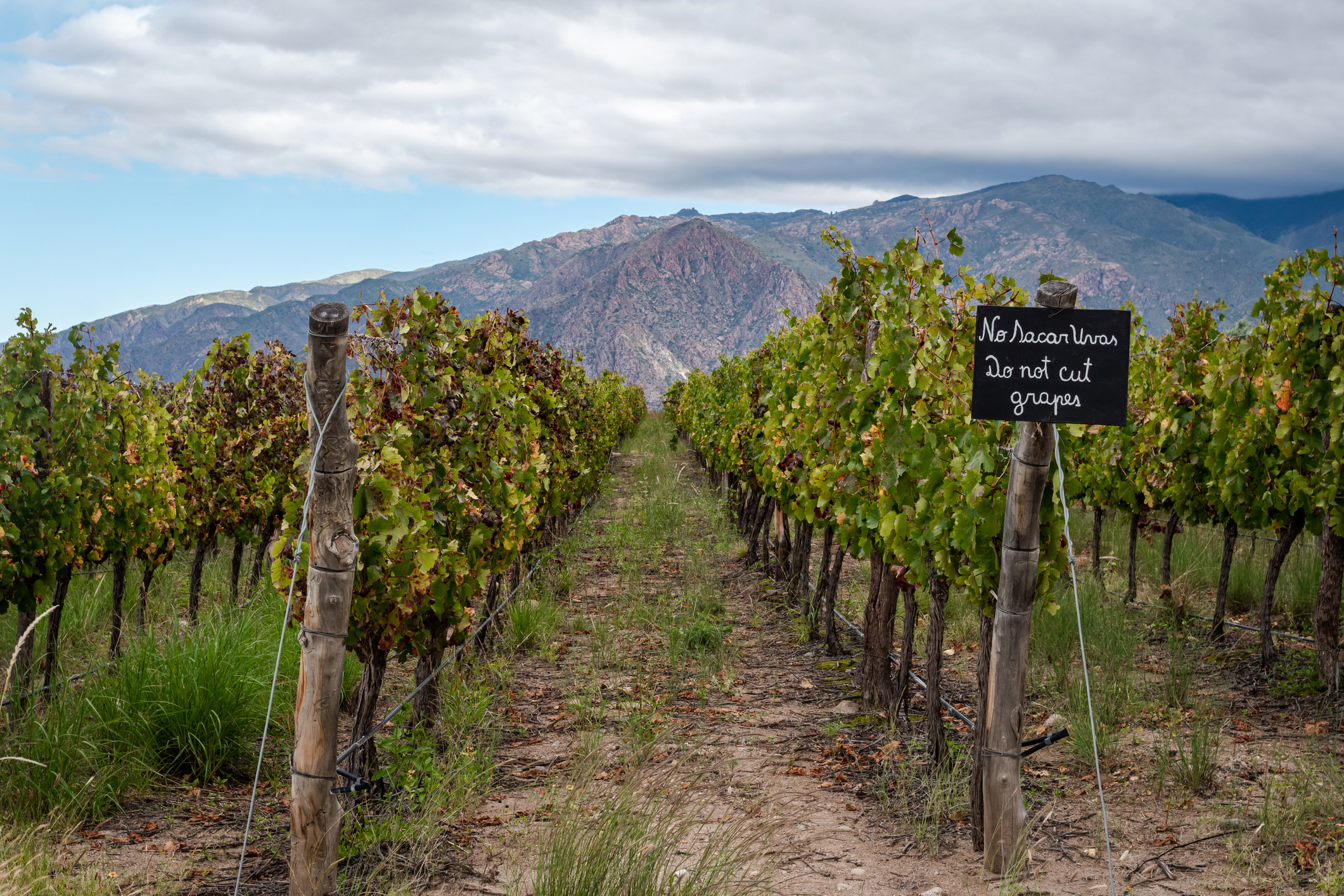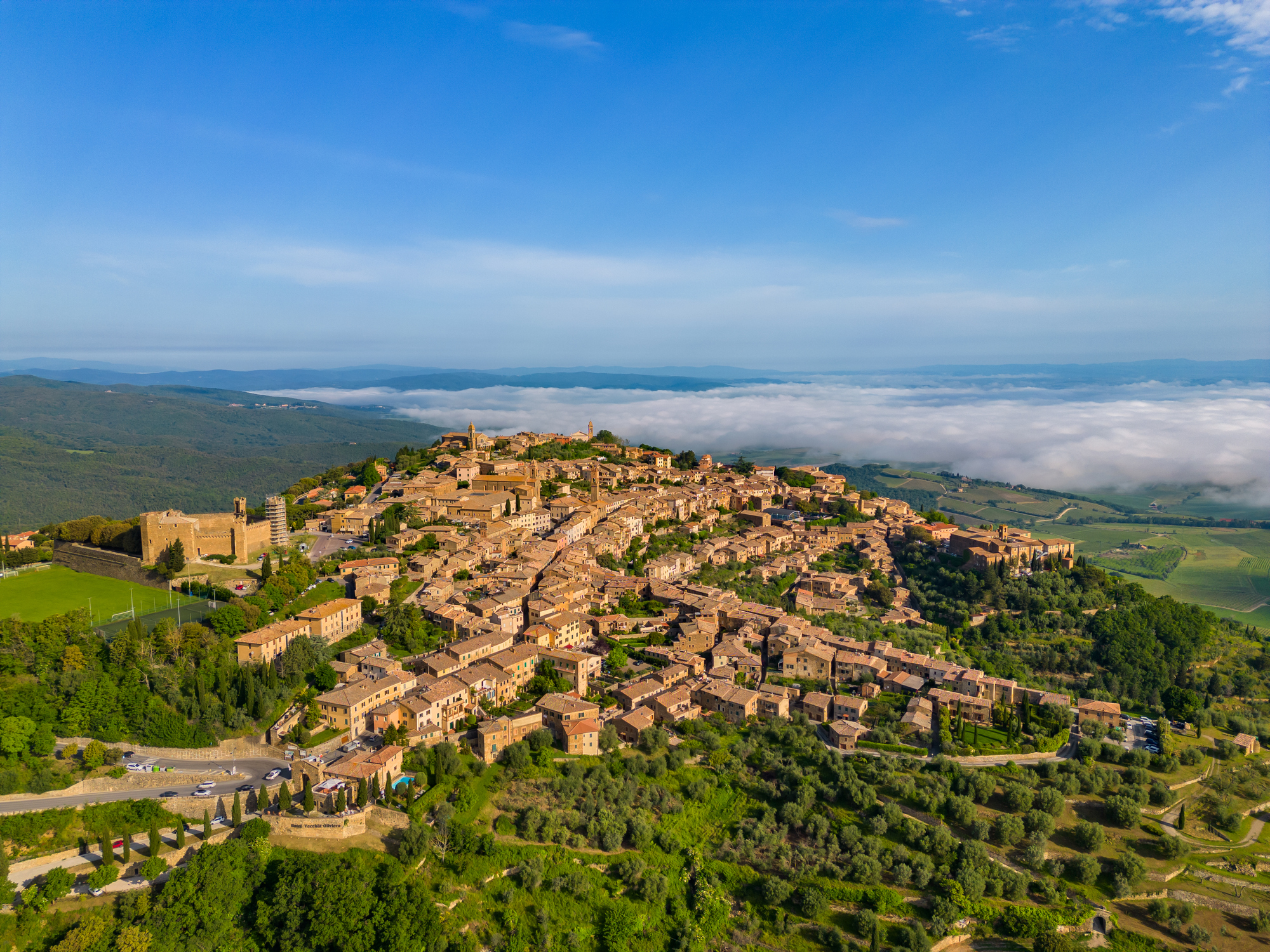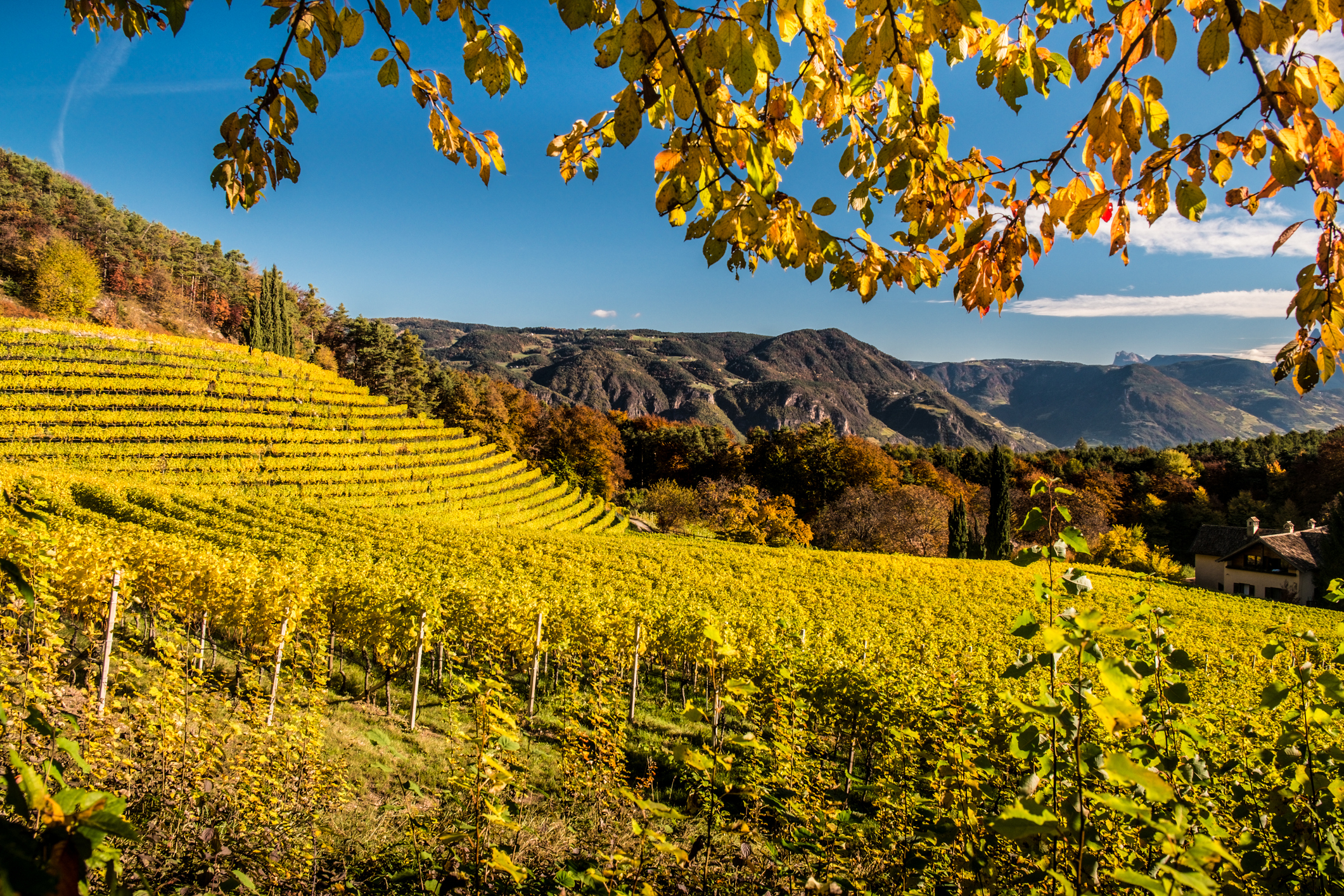How vineyards closer to the sun are evading climate change
By Kathleen WillcoxHigh-altitude grape farming has moved from fringe interest hot topic. Kathleen Willcox explores the pros, the cons and how it affects the wines in your glass.

This summer was the hottest on record, with temperatures between June and August soaring 1.5 degrees Celsius (2.7 degrees Fahrenheit) above the preindustrial average, according to the Copernicus Climate Change Service. 2024 is expected to shatter records overall, and be the warmest year ever seen on earth.
This heat is fatal for humans and really, all living things. It has not only increased the number of heat-related deaths in the U.S. alone by 117% between 1999 and 2023, according to the Journal of American Medical Association, it is causing mass extinctions and imperiling many forms of agriculture, including the grape and wine industry, with scientists warning that 85% of the world’s wine-growing regions could be wiped out by 2050 if warming trends continue.
While growing grapes at higher elevations is no panacea against warmer temperatures, it does seem to help. Scientists and vintners are finding that it allows wineries in regions where planting vineyards higher is possible to create wines that are riper, more complex and fresher than the wines they’d be able to make on the valley floor.
But why?
“We have found that the effects of altitude on vine cultivation are considerable,” says Pablo Cuneo, winemaker at Bodegas Luigi Bosca in Argentina, with vineyards at more than 3,600 feet in elevation. “The lower day and night temperatures in higher altitude vineyards allow vines to produce, concentrate and preserve more aromas, acidity and polyphenols, which create colour and tannins.”
Simply put, for every 325 feet (100 metres) in increased altitude, there is an average decrease of between 0.65 and 1 degrees Celsius in average daily temperature, which allows grapes to ripen over longer periods and produce bright wines that are naturally lower in alcohol.
We dig into the positive impact growing grapes at higher elevations has on the flavour and health of grapes—and the very real sacrifices higher-elevation farming entails.
Planting at higher elevations increases
Across the world, vineyards are getting ever-higher.
“Since 1990, we’ve observed a steady rise in average temperatures in our region, with the trend becoming even more pronounced after 2000,” says Christof Tiefenbrunner, winemaker and fifth-generation owner at Weingut Tiefenbrunner in Alto Adige, where they manage 70 acres of vineyards at between 700 feet and 3,300 feet in elevation. “In warmer years, the harvest has started up to two weeks earlier. Higher elevations, once considered too cool for certain grape varieties, are now ideal for preserving the freshness and balance we strive for in our wines.”
Christof’s father Herbert Tiefenbrunner pioneered high-altitude viticulture in Alto Adige, planting a few acres of Müller-Thurgau at 3,300 feet in elevation in 1972, despite the reactions of dubious colleagues at the vineyard’s viability. Now, high-elevation growing is the norm in the region, with some plantings reaching up to 4,400 feet in altitude.
Flowers Vineyards & Winery also planted high, at elevations of 1,150 to 1,450 feet on the Sonoma Coast in 1991, despite considerable doubt from fellow growers and vintners, says director of winemaking Chantal Forthun.
“Our founders were told that Pinot Noir and Chardonnay wouldn’t ripen when grown that high up and close to the ocean,” Forthun says. “But they realized it was precisely the extreme altitude of the site that would enable the fruit to ripen in an otherwise chilly coastal climate.”
The altitude supports ripening, while also maintaining freshness and acidity. They’ve been so impressed with the results that the team at Flowers decided to push further with the Sea View Ridge estate vineyard planted in 1998 at between 1,400 and 1,875 feet in elevation. And they’re not alone anymore: after pioneering growing there in 1991, there are 27 vineyards there today.

Pietro Ratti, owner and winemaker at Ratti Winery in Piedmont, says that planting higher up is the only way to produce the styles of wines their long-term collectors have come to expect now. He points out that the degree vintners need to move up varies considerably depending on location.
“As my father Renato Ratti pointed out in his books, every parallel can be compensated for by about 300 feet of altitude,” Ratti says. “Historically, Montalcino has used altitude to offset latitude. In Piemonte, located at the 45th parallel, viticulture has moved up by 300 feet over the past 20 years as an effective way to maintain conditions similar to those 15-20 years ago.”
Ratti now grows vines at 1,500 feet, compared to the historic 900 feet.
The pros: concentrated flavors, slower ripening, freshness less disease pressure
Grapes grown higher up drastically change the way they develop.
“Vineyards above 1,200 feet in Napa and Sonoma are known for producing wines with higher acidity, more complex flavors and structured tannins,” says Randy Ullom, winemaker at Kendall-Jackson Estate and Gardens in Santa Rosa. “Cooler nighttime temperatures and increased UV exposure lead to several important adaptations in the vines. This slows down berry development, which results in a smaller berry size, and thicker skins, which contribute to more concentrated flavors and higher tannin levels.”
The smaller berry size also creates a higher skin-to-pulp ration, which enhances the concentration of phenolic compounds, and the structure and intensity in the glass, says Martin Kaiser, winegrowing director at Doña Paula in Mendoza, Argentina, where the shift in growing has been particularly noticeable due to the higher quality wines they produce.
In the past 25 years, the highest area in Mendoza, the Uco Valley, has doubled its vineyard area from 32,200 to more than 97,000 acres. Vineyards there reach 5,250 feet in elevation.
Partner Content
“Stronger sunlight at high altitudes leads to increased production of protective compounds in grape skins, particularly anthocyanins and tannins,” Kaiser says. “High-altitude wines often display deeper colour and a more robust tannic structure, while also delivering freshness.”
Freshness is famously elusive in regions where temperatures are increasing unabated.
At Bodegas Bianchi in Argentina, vintner Silvio Alberto says that planting new vineyards at altitudes of up to 4,000 feet allow them to continue to produce exceptional wines.
“This altitude and great thermal amplitude allow us to obtain wines with a very good natural acidity and balanced pH, which achieves a very particular freshness in the mouth,” Alberto says.
At higher altitudes, there is also more wind, which reduces humidity and the diseases that accompany it.
Farming higher up changes the chemistry and potential of grapes, says Derek Delfino, co-owner and vineyard manager of Edio Vineyards at Delfino Farms in the Sierra Foothills.
“Because the berries have thicker skins, and more colour, tannin and flavor, we can pick them at a lower Brix level, with a higher acid profile, and still know they’ve reached their phenolic maturity,” Delfino says. “That means we have delicate wines that are still full of aroma and flavor, with longer hang times. More time on the vine creates a slow sugar accumulation. Berries develop most of their aromatics at the end of ripening, so drawing that period out creates more flavor.”
Tiefenbrunner confirms Delfino’s observation, saying that in Alto Adige, they’ve noticed that the ripening process for grapes is delayed one week for every 850-foot increase in altitude. Ratti says that in Piedmont, they are typically able to delay picking by 11-12 days with just 600 feet in elevation.
Cons: a logistical challenge
Growing grapes at higher elevations may produce better wine, but it comes at a steep cost.
At Bodega Colome in Salta, where they farm vineyards up to 10,206 feet in elevation, the freshness, elegance and concentration of the wines they can produce are unparalleled, but winemaker Thibaut Delmotte says that the logistical challenges of building out the vineyard were equally singular.
“We are the highest vineyard in Argentina, and there is only one higher in the world, in Tibet,” Delmotte says. “The logistics were very difficult. Everything we need to build out the vineyard and winery was in Mendoza, which is 1,000 miles away. It is complicated to bring in plants, tanks and barrels, and required a huge investment.”

The process of growing a vineyard that will be ready to produce is also slower. Regular vineyards take about four years to produce their first harvest, but high elevation vineyards at least double that, Delmotte says.
“We were able to balance the cost because we have a more commercial vineyard located at a lower altitude,” Delmotte explains. “We are producing iconic wines up high, but we couldn’t do that without the commercial line initially.”
Growers should also keep the different farming needs of high-altitude vineyards in mind.
“There is lower humidity, and often less natural water availability, so precise irrigation strategies are crucial,” says Ullom, Kendall-Jackson’s winemaker. “Additionally, steeper slopes in high-altitude areas complicate water retention and irrigation practices.”
Expect to harvest by hand, and plan to rethink canopy management to ensure grapes aren’t exposed to too much of that flavor-boosting UV radiation, Ullom says.
Clearly, the costs of farming so close to the sun are considerable. Producers that prioritize ease of work and budget over quality will probably not find the trade-off worthwhile.
But for those seeking truly premium results?
Aim high.
Related news
How vines at altitude can navigate climate change




